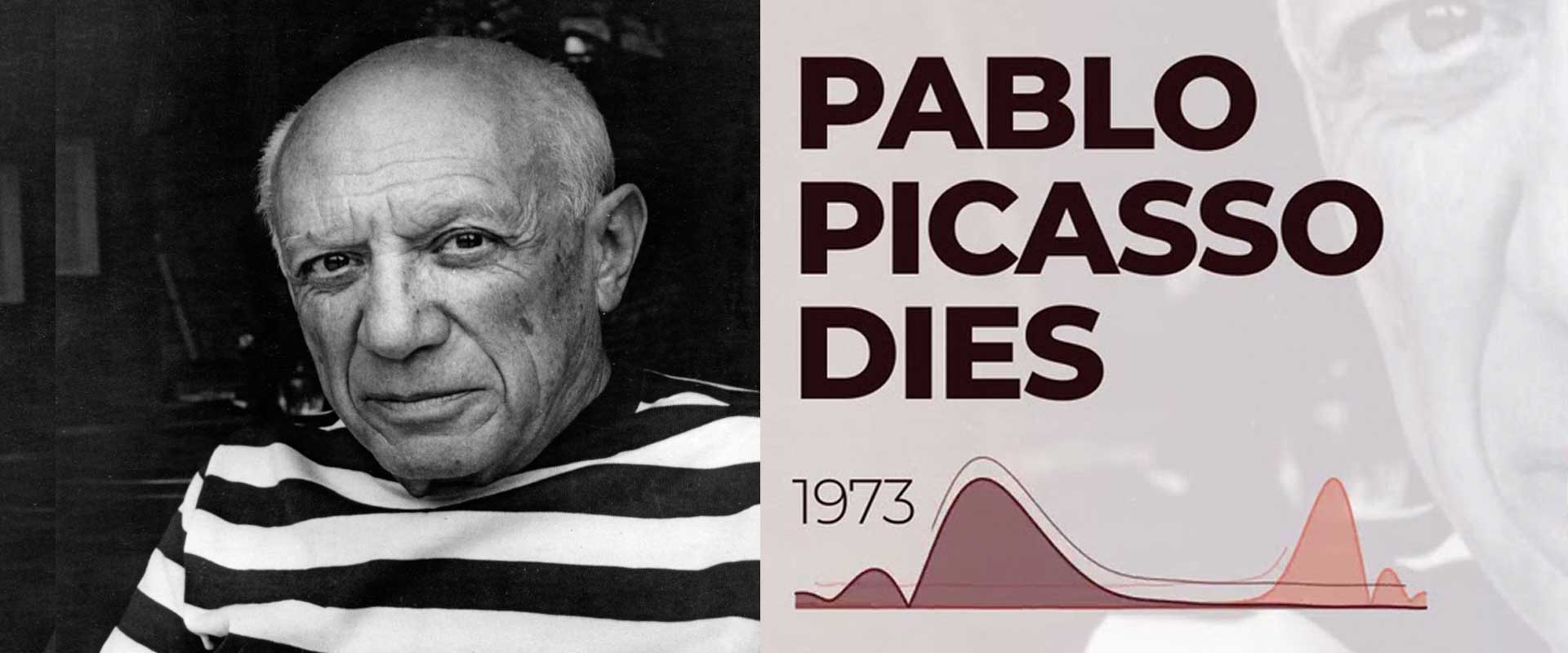The life of Pablo Picasso was one of relentless creativity. Across more than 70 years, he produced over 20,000 works that reshaped the art world. Yet like all great figures, his story has an ending. Many people ask: When did Pablo Picasso die, and what were his final days like?
The answer provides not just a date but a glimpse into the final chapter of a life dedicated to art, love, and reinvention.
When Did Pablo Picasso Die?
Picasso died on April 8, 1973, in Mougins, a village in the south of France, at the age of 91. The cause of death was heart failure. He passed away surrounded by his wife Jacqueline and close friends, after enjoying an evening gathering only hours earlier.
His death marked the end of an era, but his influence continued—and grew—even after his passing.
Picasso’s Final Years
Life in the South of France
Picasso spent much of his later life in Notre-Dame-de-Vie, a villa in Mougins. The setting provided tranquility, yet he never stopped working. Even in his 80s and 90s, he painted prolifically, experimenting with vibrant colors and bold reinterpretations of Old Masters.
Late Artistic Style
His later works are often described as free, expressive, and reflective, marked by:
- Simplified yet powerful forms
- Bold, unapologetic brushstrokes
- Reinterpretations of classics by Velázquez and Delacroix
- Themes of mortality and aging
These late paintings prove that Picasso’s energy never dimmed. In fact, many critics now see this period as one of his most daring.
As explored in Picassos Through the Decades – An Artistic Evolution, his late style shows an artist unafraid to confront age, memory, and mortality through creativity.
The Night of His Death
On April 7, 1973, Picasso hosted a dinner party with friends. The evening was full of conversation, laughter, and wine. Only hours later, in the early morning of April 8, he suffered heart failure and died peacefully.
His last words reportedly reflected his sense of humor and love of companionship: “Drink to me, drink to my health, you know I can’t drink any more.”
Key Facts About Picasso’s Death
- Date: April 8, 1973
- Place: Mougins, France
- Cause: Heart failure at age 91
- Last moments: After an evening of celebration with friends
- Legacy: Left behind an estimated 20,000+ artworks
Burial and Memorial
Picasso was buried on the grounds of Château of Vauvenargues, a property he owned near Aix-en-Provence, with views of Mont Sainte-Victoire—the mountain celebrated by Paul Cézanne, one of Picasso’s greatest influences.
The decision to be buried there symbolized Picasso’s lifelong dialogue with art history and his respect for earlier masters.
Comparison: Picasso’s Final Years vs Earlier Periods
| Period | Style & Themes | Legacy |
|---|---|---|
| Early Years (Blue & Rose Periods) | Melancholy, circus performers, emotional intensity | Revealed Picasso’s sensitivity and mastery of tone |
| Cubism (1907–1919) | Geometric fragmentation, multiple perspectives | Revolutionized modern art |
| Political Works (1930s–40s) | Guernica, Weeping Woman, wartime symbolism | Cemented him as a political voice |
| Late Years (1950s–70s) | Free, colorful, reinterpretations of Old Masters, themes of aging | Showed unrestrained creativity until death |
This table highlights how even in his final years, Picasso remained as innovative as in his youth.
Legacy After Death
Market and Collecting
Picasso’s death triggered a surge in interest and value for his artworks. Auctions and exhibitions skyrocketed in prominence, and his name became a cornerstone of the global art market.
Museums and Exhibitions
Major institutions such as the Museu Picasso in Barcelona and the Museo Reina Sofía in Madrid honor his legacy. Guernica, his most powerful anti-war masterpiece, continues to draw millions of visitors every year.
For those who want to experience his vision at home, collections like Pablo Picasso Wall Art Prints showcase reproductions of his most defining works.
Cultural Impact
Even decades later, Picasso’s name is synonymous with genius and innovation. As explored in Famous Artist Profiles: Why Picasso Still Leads the Pack, no other modern artist has achieved such enduring recognition.
Why Picasso’s Legacy Endures After Death
- Prolific output across painting, sculpture, ceramics, and printmaking
- Constant reinvention across decades
- Influence on countless movements, from Cubism to Surrealism
- Political voice through works like Guernica
- Universal recognition as a cultural icon
Conclusion
When did Pablo Picasso die? On April 8, 1973, in Mougins, France. Yet his death was not an ending—it was the beginning of his transformation into legend. His final years reveal a man unafraid of age, producing bold, experimental works that confronted mortality head-on. His burial near Cézanne’s mountain was a symbolic full circle, connecting his art to the masters who inspired him.
Picasso’s genius did not die with him; it lives on in his vast body of work, in the museums that preserve it, and in the generations of artists he continues to inspire.
FAQs on When Did Pablo Picasso Die
When did Pablo Picasso die?
He died on April 8, 1973, in Mougins, France, at age 91.
What was the cause of Picasso’s death?
He died of heart failure after an evening spent with friends and his wife Jacqueline.
Where is Picasso buried?
He is buried at Château of Vauvenargues, near Aix-en-Provence, overlooking Mont Sainte-Victoire.
What was Picasso’s final artistic phase?
His late works featured bold colors, simplified forms, and reinterpretations of Old Masters, often exploring themes of aging and mortality.
How did Picasso’s death affect the art world?
It caused a surge in the value of his works and cemented his position as one of the greatest and most studied artists of all time.





